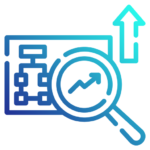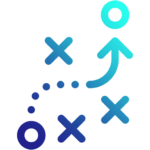
1 - Analyzing The Requirements
Analyzing the needs correctly is also one of the most important factors that prevent waste of resources. In this step, we discuss the usage areas, the target audience, the ultimate goal, and the methods to be used.
Thanks to our experience, we ensure that the goal is set out very clearly by asking the right questions.

